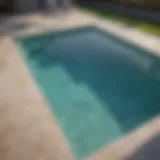Effective Strategies for Wasp Management at Home
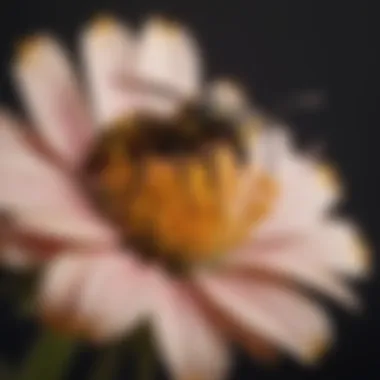

Overview of Topic
When it comes to the home improvement industry, the topic of capturing wasps in domestic spaces is often overlooked. Awasps can be a nuisance and, in some cases, a danger to both humans and pets. Understanding their behavior and biology is crucial for effective management. By grasping the nuances of their patterns, homeowners can mitigate risks and maintain their living environments safely.
The importance of addressing wasp issues stretches beyond mere discomfort. These creatures can build nests in and around homes, leading to potential allergic reactions in sensitive individuals, and causing significant distress, especially for families with young children or pets. Taking proactive measures to capture wasps not only ensures a safer home but also enhances the overall quality of life for those who live there. Recognizing their role in local ecosystems, homeowners need to approach wasp management thoughtfully.
Common Challenges and Solutions
Homeowners often grapple with several challenges regarding wasps. Some common issues include:
- Nesting Locations: Wasps frequently build nests in hidden or hard-to-reach spots. While attics and eaves are common, some even find refuge in garden sheds.
- Aggression Levels: Certain tramplings can provoke nearby wasps, leading to swarms. It’s crucial to avoid stirring the nest and to act cautiously.
- Effective Identification: With various species of wasps, proper identification becomes essential. Misidentifying a wasp species may lead to incorrect handling techniques.
To tackle these challenges, consider these solutions:
- Regular inspections around the house to detect nests early and minimize aggressive encounters.
- Using protective gear when attempting any removal methods, ensuring safety first.
- Educating oneself on the specific traits of local wasp species to tailor approaches effectively. This can help in knowing when to call professionals.
Product Recommendations
When managing wasp issues, selecting the right products is paramount. Here are a few top products hailed in the market:
- Ortho Bug B Gone: Effective for immediate contact killing; it's easy to spray, reaching those tricky spots.
- Rescue Wasp Trap: A baited trap specifically designed to lure wasps while keeping your outdoor spaces sting-free.
- D.I.Y. Wasp Spray: Many homeowners have found success with homemade solutions comprising vinegar and dish soap, offering a safe alternative to chemical sprays.
Each of these products brings unique benefits and features, whether it’s swift action or safety for pets and children. Remember to follow the instructions closely to maximize effectiveness.
Step-by-Step Guides
Implementing effective strategies for capturing wasps requires careful planning and execution. Here’s a practical guide:
- Identify the Wasp Type: Approaching the situation requires knowing which species you're dealing with. A quick research moment can spare you future headaches.
- Locate the Nest: Inspect potential areas. Use a flashlight during the evenings when wasps are less active.
- Gather Necessary Supplies: Ensure you have protective clothing, a high-quality insecticide spray, or traps. If using traps, position them away from frequently used outdoor spaces.
- Execute Safely: If you must approach a nest, do so at night when they are calmer. Spraying insecticide from a safe distance is often the best initial move.
- Monitor the Area: After taking action, observe the nest for a few days to ensure effectiveness. If wasps are still active, consider a second round with traps or professional assistance.
By following these clear steps and considering the environment around your home, you can make informed decisions about wasp management. Such proactive measures result not only in immediate relief but also in long-term safety and peace of mind.
"An ounce of prevention is worth a pound of cure." This timeless adage rings true in the realm of pest management; taking precautions can save you from extensive troubles later on.
As you tackle wasp concerns, remember both the safety of your household and the ecological balance. Capturing wasps effectively while respecting their role in the environment is key to maintaining harmony.
Understanding Wasps
In tackling the challenge of capturing wasps in domestic settings, it’s imperative to first delve into a comprehensive understanding of these insects. Familiarizing oneself with their biology, behavior, and the different species commonly found indoors lays the foundation for effective management strategies. Knowing what drives wasps, how they function, and their nesting habits not only helps in formulating a plan but also enhances safety during the capture process.
The Anatomy of Wasps
Wasps are fascinating creatures, exhibiting unique anatomical features that distinguish them from other insects. Their bodies are divided into three primary segments: the head, thorax, and abdomen. The head contains large compound eyes and antennae that serve crucial sensory functions. Their mouths are adapted to chew and lap up food, allowing them to consume a variety of substances, from nectar to other insects.
One notable aspect of their anatomy is the stinger, which is actually a modified ovipositor and is found at the end of the abdomen. This sharp appendage is what allows wasps to defend themselves or capture prey. Interestingly, female wasps typically possess a stinger, while males do not, relying on other strategies for protection.
Understanding the anatomy of wasps helps to demystify their behavior and can be essential when considering capture methods.
Behavioral Patterns
Wasps exhibit behaviors that are as varied as the species themselves. They are highly social insects, particularly the species that form colonies, such as yellow jackets and paper wasps. These colonies function cohesively, with each member having specific roles—workers gather food, while queens are tasked with reproduction. This social structure can influence how and when they become aggressive, particularly during late summer when they are most protective of their nests.
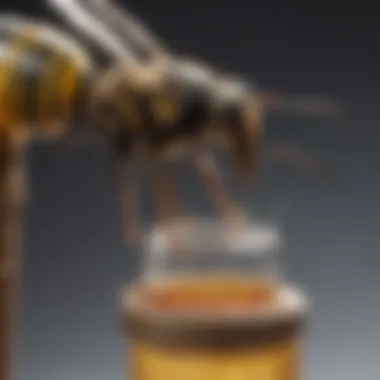

During foraging, wasps can become attracted to food sources, often invading picnics or human dwellings. This attraction to sweet substances, especially sugary drinks and ripe fruits, highlights the importance of maintaining food security within domestic spaces. Learning these patterns not only allows for more efficient capture but also informs preventive strategies. Understanding that wasps are primarily active during the day can help in planning when to set traps or when to expect their highest activity.
Types of Wasps Commonly Found Indoors
In an indoor setting, one might encounter several types of wasps. Here are a few notable species:
- Yellow Jackets: Recognizable by their black and yellow striped bodies, these wasps are notorious for scavenging food.
- Paper Wasps: Named for their unique nests made of paper-like material, they typically appear less aggressive compared to yellow jackets but will defend their nests when threatened.
- Hornets: A subset of wasps, hornets tend to be larger and more aggressive, but they usually reside outside. During the peak summer months, they may stray indoors in search of food.
By recognizing these different species, homeowners can tailor their approaches to wasp management, ensuring that risks are minimized and that capture methods are suited to the specific variety they are dealing with.
Risks Associated with Wasps
Understanding the various risks associated with wasps is essential for anyone managing domestic spaces. It's not just about keeping your home cozy and inviting, but also about safeguarding your health, property, and the environment. The presence of wasps can introduce several complications, making it imperative to recognize potential dangers. Here’s a closer look at what you should be aware of when dealing with these insects.
Health Risks
When it comes to wasps, the first thing that springs to mind is the possibility of being stung. Wasps are not just territorial; they can become aggressive if provoked. A sting from a wasp can cause pain, redness, and swelling. For many, this is just an unpleasant experience, but for those allergic to their venom, the consequences can be dire. An allergic reaction might lead to anaphylaxis, a life-threatening condition requiring immediate medical attention.
Did you know? Approximately 2 million people experience severe allergic reactions to wasp stings in the U.S. each year.
Such dangers underscore the need to be vigilant, especially around children and pets, who might unknowingly provoke a wasp. Even individuals without known allergies should take care, as reactions can develop over time. Being cautious is the name of the game.
Property Damage Concerns
Another dimension to consider is the potential property damage that wasps can cause. They often build nests in eaves, attics, or hidden away in sheds. The structures of these nests can weaken materials over time, leading to costly repairs. Furthermore, a wasp infestation can also attract other pests, complicating the situation a bit more.
In addition to physical damage, wasps can affect your property’s aesthetics. An unsightly nest hanging off the side of your home can be both an eyesore and a concern for guests. This often leads homeowners to wonder how to effectively deal with the creatures without jeopardizing their property’s value.
Environmental Impact
Lastly, the environmental implications of wasps can't be overlooked. Wasps play a dual role in nature—acting as both predators and prey. They help control pest populations by preying on insects, which can be beneficial in gardens. However, if their numbers skyrocket, they can become more aggressive and create an imbalance in the ecosystem.
Moreover, their nests can become a focal point for other species, leading to a cascade of interactions that can upset local fauna. Overcrowding wasp populations might lead to increased competition for resources among local wildlife. Balancing this natural role with human habitation is crucial for maintaining ecological harmony.
In summary, while wasps can offer certain benefits to the environment, their presence poses considerable risks that shouldn't be taken lightly. Addressing these risks not only helps in creating a safer atmosphere but also in ensuring that your home remains a pleasant refuge.
Safety Precautions
Addressing wasps in domestic spaces isn't merely about capturing these insects; it's a matter of priority when it comes to safety. Wasps can pose significant risks not only because of their capability to sting but also due to potential allergic reactions. It’s crucial for homeowners to take the necessary precautions as they engage in any wasp management activities.
Identifying Allergies
Before undertaking any operations to capture or deal with wasps, it’s vital for everyone in the household to know whether they have allergies to insect stings. Wasps can cause reactions that vary from mild irritations to severe anaphylaxis.
- Signs of an Allergic Reaction: If someone experiences symptoms like hives, swelling, difficulty breathing, or fainting after being stung, this could indicate an allergy. It’s wise to consult with a healthcare professional to confirm any suspected allergies.
- Prior Research: Keep handy information on local hospitals or clinics. Knowing where to rush in case of an emergency will add a layer of comfort and preparedness.
- Creating an Action Plan: If someone in your household has a documented allergy, having an EpiPen ready can be a lifesaver. Also, all family members should be informed about what to do if someone is stung.
"An ounce of prevention is worth a pound of cure." This rings especially true when dealing with these flying nuisances.
Gear and Equipment
When engaging with wasps, having the right gear ensures safety and confidence.
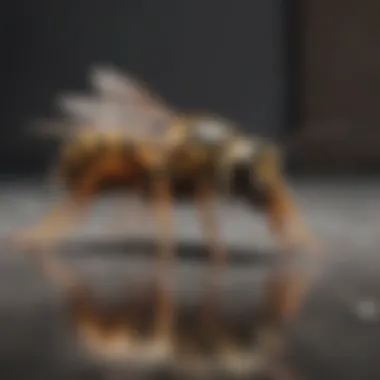

- Protective Clothing: Donning long sleeves, long pants, and gloves is a must. Be mindful of not wearing brightly colored clothing or floral patterns, as this can attract wasps unexpectedly. A head net can offer additional protection for your face and neck.
- Safety Tools: Equip yourself with tools designed for handling and capturing wasps without getting too close. For example, a wasp trap or a vacuum specially designed for insects can be valuable. These tools can capture wasps without requiring immediate physical contact.
- Spraying Equipment: If employing insecticide sprays, ensure that you have a spray that’s specifically made for stinging insects. Follow the instructions precisely to minimize risks to yourself and the environment.
When to Seek Professional Help
Knowing when to toss in the towel and call for reinforcements can make all the difference in your wasp management strategy.
- Large Infestations: If you find yourself in a situation with numerous wasps or even a nest, this is a strong indicator to consult a pest control expert. The risk of bothering the wasps increases significantly with larger populations.
- Frequent Stings: If any members of your household are frequently stung, especially those with allergies, then it’s time to elevate this to professional help as safety comes first.
- Lack of Experience: If you're uncomfortable or unfamiliar with capturing and managing wasps, it’s better to pass the baton. Experts have the training and tools that ensure effectiveness while prioritizing safety.
In summary, ensuring safety while managing wasps requires vigilance, proper equipment, and, when necessary, professional involvement. Being cautious will protect not only yourself but also your loved ones as you tackle any pesky invaders.
Methods for Capturing Wasps
Capturing wasps effectively requires a thoughtful approach that blends practical methods with a clear understanding of this creature's behavior. Homeowners, especially those with sensitivities to stinging insects, often find themselves in a tight spot when trying to rid their domestic spaces of wasps. Choosing the right method can make all the difference—not only in terms of safety but also in efficiency and long-term results.
Each method comes with its own set of advantages and considerations, making it essential to grasp the nuances of these techniques. Whether you're leaning towards traps, hand capture, or even enlisting natural predators, there's a strategy to fit nearly every situation.
Traps and Baits
When it comes to wasp control, traps and baits often serve as the frontline defense. These methods take advantage of wasps' natural behavior, tricking them into a catchment area.
A commonly used bait includes a mixture of sugar water or fruit juice combined with a bit of vinegar. This concoction is quite appealing to many wasps. A simple DIY trap can be concocted by cutting the top off a plastic bottle and inverting it back into the base; wasps are drawn in but are hard pressed to find their way back out.
- Benefits:
- Non-invasive: Traps can reduce populations without chemical intervention.
- Safe for families: Likely to keep a healthy distance from living spaces.
However, there are some vital considerations:
- Placement matters: Traps should be set away from human activity, lest they attract more wasps to you.
- Maintenance: Regularly check and replace baits to keep traps effective.
"A well-placed trap can catch thousands while you’re enjoying your garden tea."
Hand Capture Techniques
For the more daring individuals, hand capture techniques can be viable options. Using a clean, smooth container like a jar, simple stealth can allow you to capture a solitary wasp without causing a fuss.
- Approach slowly: Quick movements will startle the wasp, so a gentle, deliberate approach is key.
- Cover the wasp: Once it's inside the jar, quickly cover it with a lid or a piece of cardboard.
- Release carefully: Move it a safe distance away from your home before releasing.
While this method can be satisfying, it carries inherent risks. Getting too close can provoke the wasp, leading to angry swarming. If you're allergic to bug bites or stings, it's best to steer clear of this method.
Using Natural Predators
Nature has a way of balancing itself, and one often overlooked facet of wasp management is utilizing natural predators. Birds, specifically, are known to consume wasps.
- Attract birds: Consider installing bird feeders to attract species that prey on wasps.
- Create habitats: Certain plants can also invite birds and beneficial insects into your yard, creating a natural control environment.
While this method might not bring immediate results, fostering a healthier ecosystem provides a more sustainable way to handle potential infestations in the long run. It's both legally and ethically sound, considering the existing balance of nature.
Preventive Strategies
Taking a proactive approach to managing wasps in domestic spaces is just as important as understanding them or knowing how to trap them. Preventive strategies allow homeowners to create an environment that's less inviting for these persistent insects. This not only enhances safety but also gives peace of mind to those who share their homes with family and pets. By implementing effective preventive measures, individuals can significantly reduce the likelihood of a wasp invasion.
Sealing Entry Points
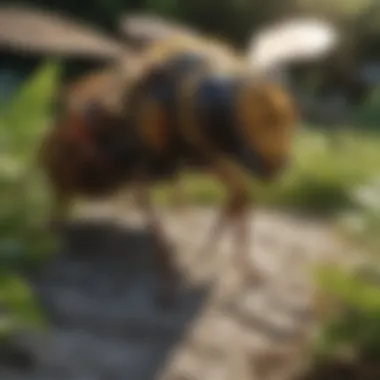

One of the first lines of defense against wasps is identifying and sealing potential entry points around your home. Cracks, gaps, or holes around windows, doors, and the foundation can easily be exploited by these insects. Using caulk or expanding foam to seal openings is a straightforward method that can keep many pests at bay. Here are a few steps to consider:
- Inspect your home thoroughly for any cracks or openings. Pay special attention to areas where wires or pipes enter the building, as these spots often go unnoticed.
- Use durable materials like weather stripping for doors and windows. A good seal can prevent wasps from finding their way inside.
- Repair any damaged screens. If you have windows that you like to keep open for fresh air, ensure that the screens are intact and without holes.
"An ounce of prevention is worth a pound of cure."
By taking these initial steps, you create a barrier that not only keeps wasps out but also deters other pests, making your home a less attractive target.
Removing Food Sources
Wasps are notoriously attracted to food sources, which can include sugary substances, meat, or even fallen fruit from trees. Ensuring that your environment lacks these appealing options can greatly lower the chances of attracting wasps. Here are some strategies:
- Store food properly: Keep food in airtight containers, especially when hosting outdoor gatherings. Leaving out sugary drinks or exposed food can lure them in.
- Clean up spills promptly: If you spill any sugary drinks, wipe it up immediately instead of waiting. Consider using soap and water to eliminate potential scents that attract wasps.
- Maintain outdoor areas: Regularly mowing your lawn and cleaning up fallen fruit or food scraps can make your yard less inviting.
By adopting these practices, you’re not just protecting your home from wasps, you’re also maintaining a neater environment, which can appeal to house owners looking to ensure their spaces stay tidy and welcoming.
Regular Maintenance and Inspections
Another key element in wasp prevention is committing to regular maintenance and inspections. This not only keeps a watchful eye on potential wasp nests but also guarantees that your home remains in good shape, thereby reducing attractive spots for these insects. Here’s how you can approach this:
- Conduct seasonal checks: At the start of spring, inspect your home for signs of wasps or nests, which become active during warmer months.
- Trim trees and bushes: Ensure that branches are not overhanging or too close to the structure of your home. Wasps often build nests in tree branches, so cutting them can thwart their plans.
- Hire professionals for yearly inspections: Consider engaging pest control services to conduct an annual inspection. Their expertise can reveal potential issues that a home owner might miss.
Regular maintenance serves as a crucial tactic in wasp prevention. Knowing your environment and being proactive will empower you, allowing you to enjoy your home without the worry of an unexpected wasp visit.
Legal and Ethical Considerations
Addressing the legal and ethical aspects of capturing wasps in domestic spaces is crucial for both homeowners and the creatures themselves. Ignoring these considerations can lead to consequences that affect not just the individual but also the environment and community. Understanding the laws surrounding pest control services and the ethical treatment of wasps influences how one approaches wasp management. It’s not merely about keeping your home bug-free. It's about maintaining harmony within your environment while respecting local wildlife.
Understanding Local Regulations
Local regulations can vary significantly from one area to another, impacting how wasps should be handled. Many jurisdictions have specific laws concerning the removal of pests, particularly stinging insects like wasps. Homeowners must recognize these laws to avoid potential fines or legal issues.
- Research local pest control laws: Most towns and cities have guidelines that control the methods for managing insect populations, including wasps. Familiarizing oneself with these regulations ensures you comply while seeking effective solutions.
- Check for protected species: Some wasp species may be protected by law. This means homeowners should refrain from capturing or exterminating them without special permissions or licenses. Local environmental agencies or wildlife organizations can provide necessary insights related to these protectively regarded species.
- Permits and licenses: In some regions, homeowners require permits to remove or destroy nests. It's prudent to consult with local authorities or pest control experts to determine if any such permits apply in your situation.
Understanding and following these regulations prevents legal hassles, ensuring that wasp management is not only effective but also compliant with the law. Failure to adhere to these guidelines can result in unwanted penalties or damage to local ecosystems, which is the last thing any homeowner would want.
Ethical Treatment of Wasps
Once the legal framework is understood, attention must turn to ethical considerations. It’s important to treat wasps with the same care as other living creatures. Here are several strategies to ethically manage wasp populations:
- Non-lethal methods first: Whenever possible, prioritize methods that do not harm wasps. Traps that capture wasps alive allow for relocation rather than extermination. This approach promotes coexistence rather than conflict.
- Educating the community: Share knowledge about the benefits of wasps. They can be good for gardens, controlling pest populations naturally. This could lead to a community-wide shift towards a more compassionate approach to wasp management.
- Respect their role in the ecosystem: Recognize that wasps play vital roles in pollination and pest control. This understanding fosters a more balanced perspective, leading to more thoughtful decisions regarding their management.
"Taking a responsible approach to dealing with wasps not only safeguards your home but also the delicate balance of your local ecosystem."
By incorporating these ethical principles into our practices around wasps, we can contribute to a more harmonious relationship between humans and nature. homeowners are encouraged to be proactive in their efforts to find solutions for wasp management that align with both legal standards and ethical responsibilities.
Epilogue
Effectively managing wasp presence in domestic settings is crucial for both safety and comfort. Wasps can pose significant health risks, especially for individuals with allergies, and they can also be quite aggressive if provoked. Understanding how to capture them safely and ethically contributes not just to personal well-being but also to maintaining a peaceful home environment.
Summary of Key Points
- Understanding Wasps: Gaining knowledge about wasp anatomy and behavior helps in devising better strategies for capture. Recognizing the types of wasps prevalent in your area can also guide your approach to their management.
- Risks and Precautions: By identifying health risks associated with wasps, homeowners can take proactive measures. Knowledge of safety gear and when to seek professional help is essential in reducing hazards.
- Capture Techniques: Various methods including traps, hand capture, and utilizing natural predators provide a diverse toolkit for effectively managing wasps. Each technique serves a different context and can be chosen based on specific domestic scenarios.
- Preventive Strategies: By sealing entry points, removing food sources, and conducting regular property maintenance, one can significantly lower the likelihood of unexpected wasp encounters.
- Legal and Ethical Considerations: Understanding local regulations and approaching wasp treatment with ethics in mind ensures not just compliance but also respect for the ecosystem.
Final Thoughts on Wasp Management
Managing wasps is not merely about getting rid of a nuisance; it's about creating a safe and harmonious living space. While the methods for capturing wasps can vary greatly, the underlying objective remains the same: to handle these creatures with both effectiveness and care. Homeowners are encouraged to turn to tried-and-true techniques, keeping their unique circumstances in mind.
By combining knowledge with practical strategies, individuals can maintain a drama-free home, all while respecting the role that wasps play in the environment. With the right approach, the challenge of managing wasps at home can transform from a worrying issue into a manageable task.
